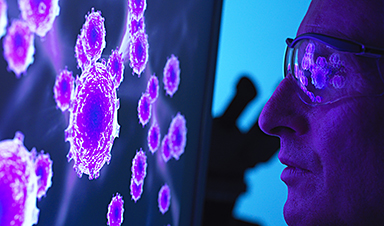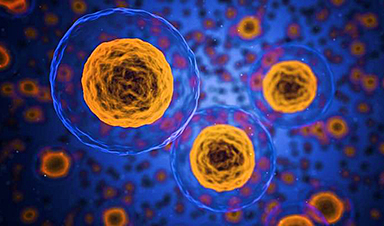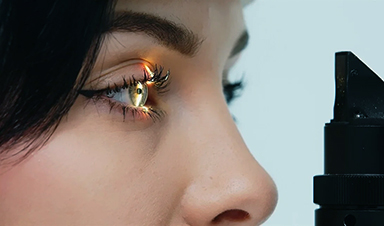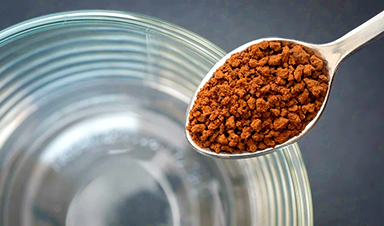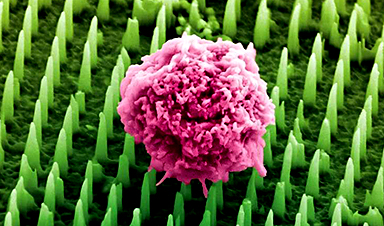Sweat contains biomarkers that help doctors make health diagnoses. Wearable sensors can be used to monitor a person’s perspiration rate and provide information about the skin, nervous system activity and underlying health conditions. But not all sweat is created equal, and some cannot be measured with current sensors. A newly developed superhydrophobic biosensor could be used as a diagnostic tool to detect such types of sweat.
Sensible, or liquid, perspiration is sweat that can be perceived by a person, such as during intensive exercise. Wearable sensors can provide continuous, non-invasive tracking of this type of sweat. Insensible, or vapor, perspiration is different. It is the loss of only water from the skin, secreted at a much smaller rate during low-intensity exercise or rest, and measuring it is difficult, according to Cheng.
“Monitoring insensible sweat is of high interest for evaluating skin health and disease conditions, such as eczema and wound healing, as well as underlying health statuses, such as pain or anxiety,” Cheng said. “Skin-interfaced devices that detect sweat rate and loss are currently limited to working with sensible sweat and are not suitable for insensible sweat in a vapor state.”
Cheng developed a prototype of a superhydrophobic sweat sensor to measure vapor from insensible perspiration. The material—a superabsorbent hydrogel composite on a porous substrate sandwiched between two superhydrophobic textile layers—allows the permeation of sweat vapor while preventing the sensor from being affected by the external water droplets of sensible perspiration. The sensor could be integrated with a flexible wireless communication and powering module that continuously monitors sweat rates at different body locations.
“Proof-of-concept demonstrations on human subjects showcased the feasibility to continuously evaluate the body’s thermoregulation and skin barrier functions,” Cheng said. “This enables the assessment of thermal comfort, disease conditions and nervous system activity and provides a low-cost device platform to detect other health-relevant biomarkers in the sweat vapor as the next-generation sweat sensor for smart health care and personalized medicine.”
News
Drug-Coated Neural Implants Reduce Immune Rejection
Summary: A new study shows that coating neural prosthetic implants with the anti-inflammatory drug dexamethasone helps reduce the body’s immune response and scar tissue formation. This strategy enhances the long-term performance and stability of electrodes [...]
Scientists discover cancer-fighting bacteria that ‘soak up’ forever chemicals in the body
A family of healthy bacteria may help 'soak up' toxic forever chemicals in the body, warding off their cancerous effects. Forever chemicals, also known as PFAS (per- and polyfluoroalkyl substances), are toxic chemicals that [...]
Johns Hopkins Researchers Uncover a New Way To Kill Cancer Cells
A new study reveals that blocking ribosomal RNA production rewires cancer cell behavior and could help treat genetically unstable tumors. Researchers at the Johns Hopkins Kimmel Cancer Center and the Department of Radiation Oncology and Molecular [...]
AI matches doctors in mapping lung tumors for radiation therapy
In radiation therapy, precision can save lives. Oncologists must carefully map the size and location of a tumor before delivering high-dose radiation to destroy cancer cells while sparing healthy tissue. But this process, called [...]
Scientists Finally “See” Key Protein That Controls Inflammation
Researchers used advanced microscopy to uncover important protein structures. For the first time, two important protein structures in the human body are being visualized, thanks in part to cutting-edge technology at the University of [...]
AI tool detects 9 types of dementia from a single brain scan
Mayo Clinic researchers have developed a new artificial intelligence (AI) tool that helps clinicians identify brain activity patterns linked to nine types of dementia, including Alzheimer's disease, using a single, widely available scan—a transformative [...]
Is plastic packaging putting more than just food on your plate?
New research reveals that common food packaging and utensils can shed microscopic plastics into our food, prompting urgent calls for stricter testing and updated regulations to protect public health. Beyond microplastics: The analysis intentionally [...]
Aging Spreads Through the Bloodstream
Summary: New research reveals that aging isn’t just a local cellular process—it can spread throughout the body via the bloodstream. A redox-sensitive protein called ReHMGB1, secreted by senescent cells, was found to trigger aging features [...]
AI and nanomedicine find rare biomarkers for prostrate cancer and atherosclerosis
Imagine a stadium packed with 75,000 fans, all wearing green and white jerseys—except one person in a solid green shirt. Finding that person would be tough. That's how hard it is for scientists to [...]
Are Pesticides Breeding the Next Pandemic? Experts Warn of Fungal Superbugs
Fungicides used in agriculture have been linked to an increase in resistance to antifungal drugs in both humans and animals. Fungal infections are on the rise, and two UC Davis infectious disease experts, Dr. George Thompson [...]
Scientists Crack the 500-Million-Year-Old Code That Controls Your Immune System
A collaborative team from Penn Medicine and Penn Engineering has uncovered the mathematical principles behind a 500-million-year-old protein network that determines whether foreign materials are recognized as friend or foe. How does your body [...]
Team discovers how tiny parts of cells stay organized, new insights for blocking cancer growth
A team of international researchers led by scientists at City of Hope provides the most thorough account yet of an elusive target for cancer treatment. Published in Science Advances, the study suggests a complex signaling [...]
Nanomaterials in Ophthalmology: A Review
Eye diseases are becoming more common. In 2020, over 250 million people had mild vision problems, and 295 million experienced moderate to severe ocular conditions. In response, researchers are turning to nanotechnology and nanomaterials—tools that are transforming [...]
Natural Plant Extract Removes up to 90% of Microplastics From Water
Researchers found that natural polymers derived from okra and fenugreek are highly effective at removing microplastics from water. The same sticky substances that make okra slimy and give fenugreek its gel-like texture could help [...]
Instant coffee may damage your eyes, genetic study finds
A new genetic study shows that just one extra cup of instant coffee a day could significantly increase your risk of developing dry AMD, shedding fresh light on how our daily beverage choices may [...]
Nanoneedle patch offers painless alternative to traditional cancer biopsies
A patch containing tens of millions of microscopic nanoneedles could soon replace traditional biopsies, scientists have found. The patch offers a painless and less invasive alternative for millions of patients worldwide who undergo biopsies [...]











